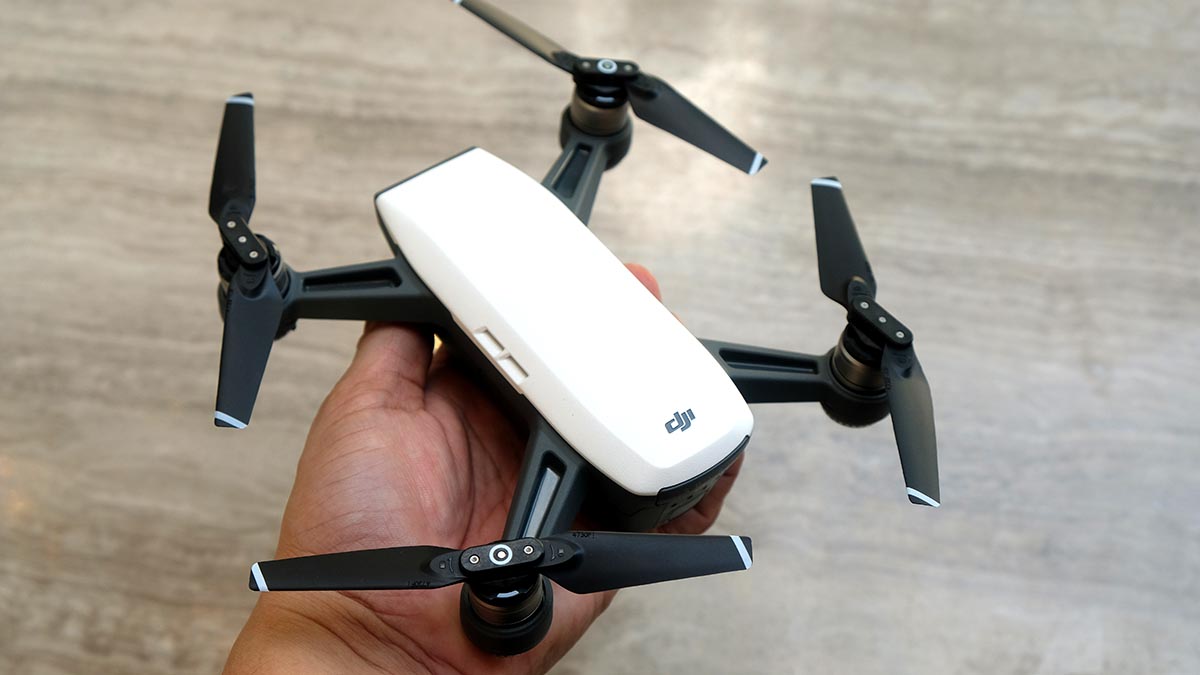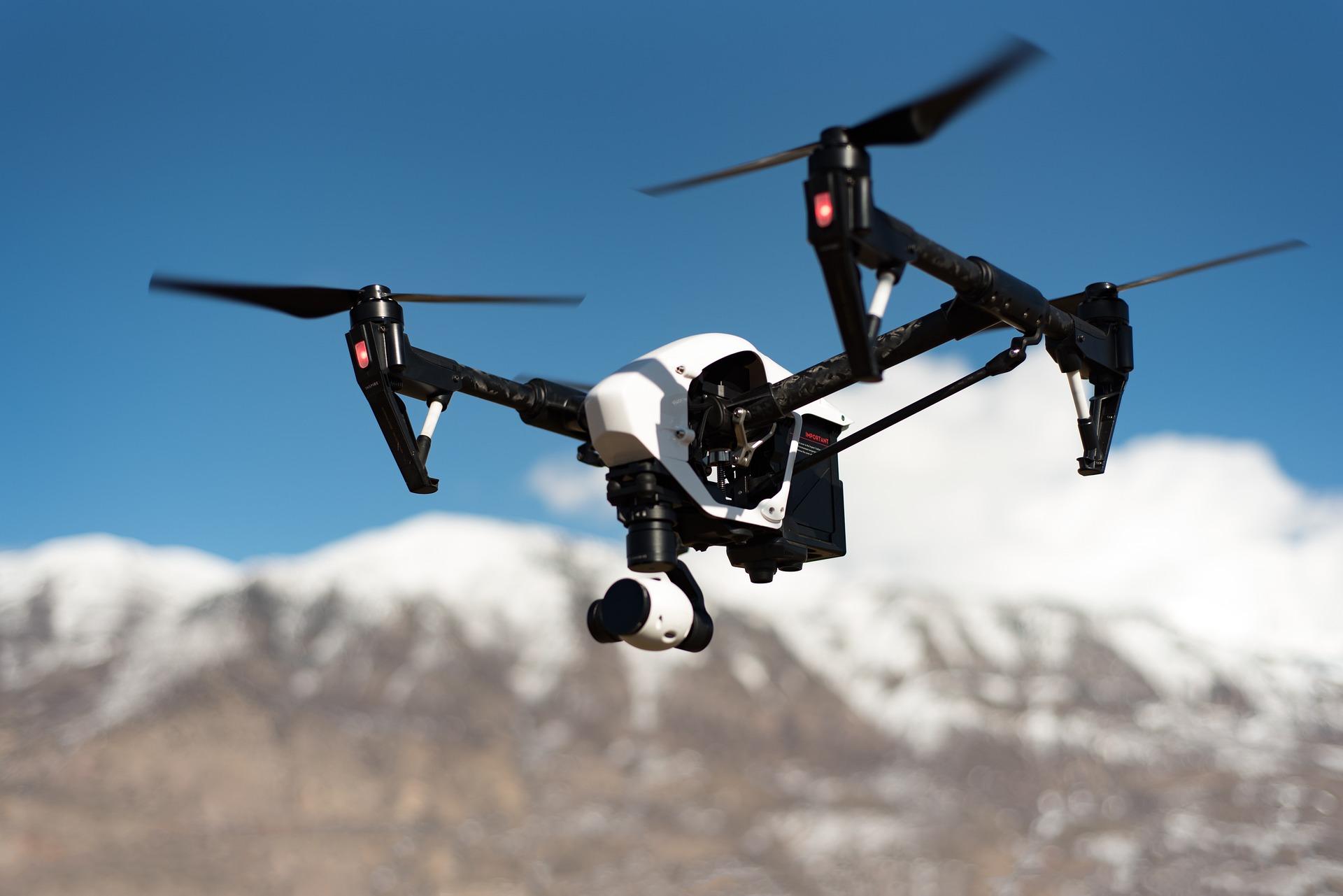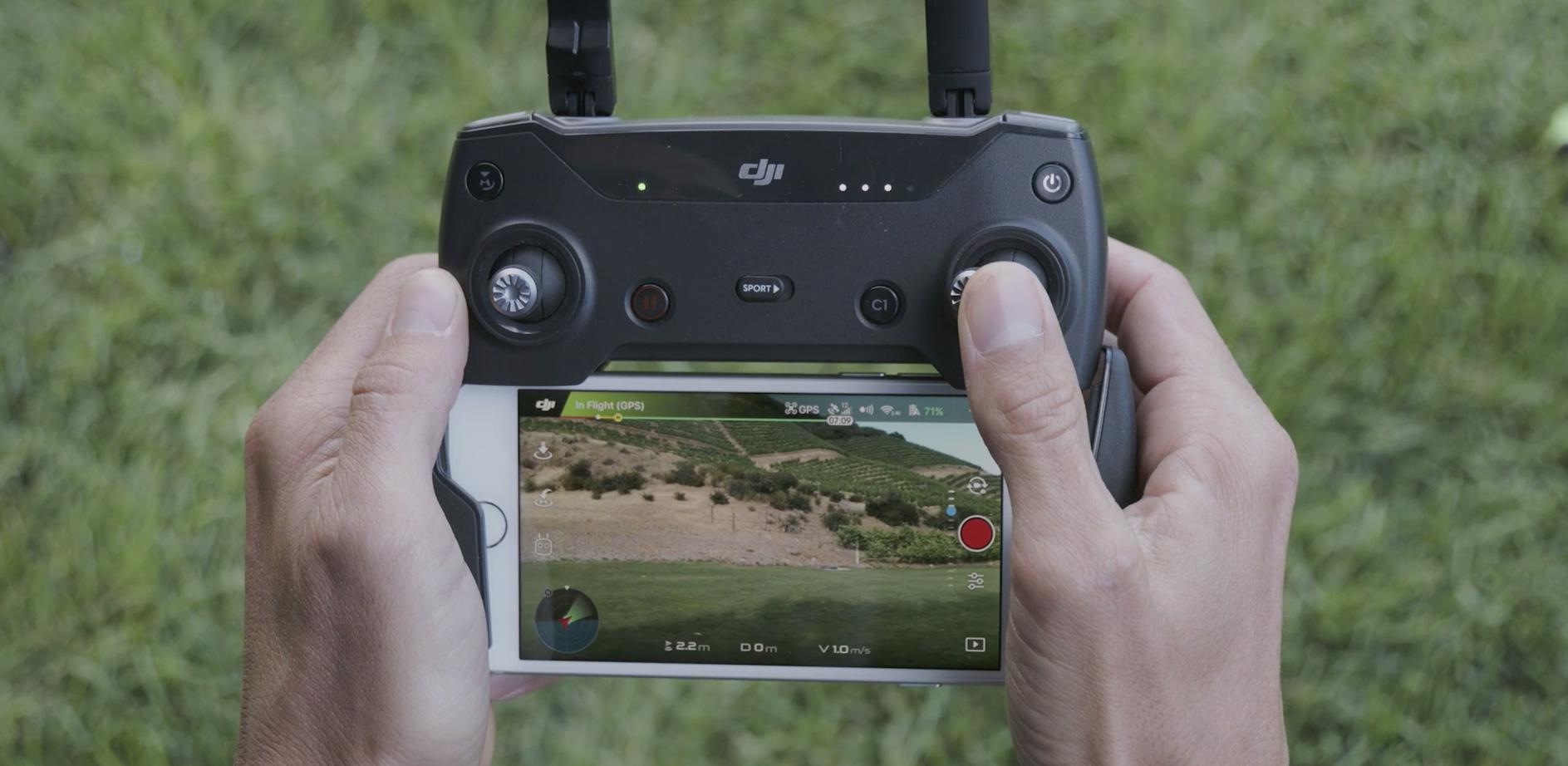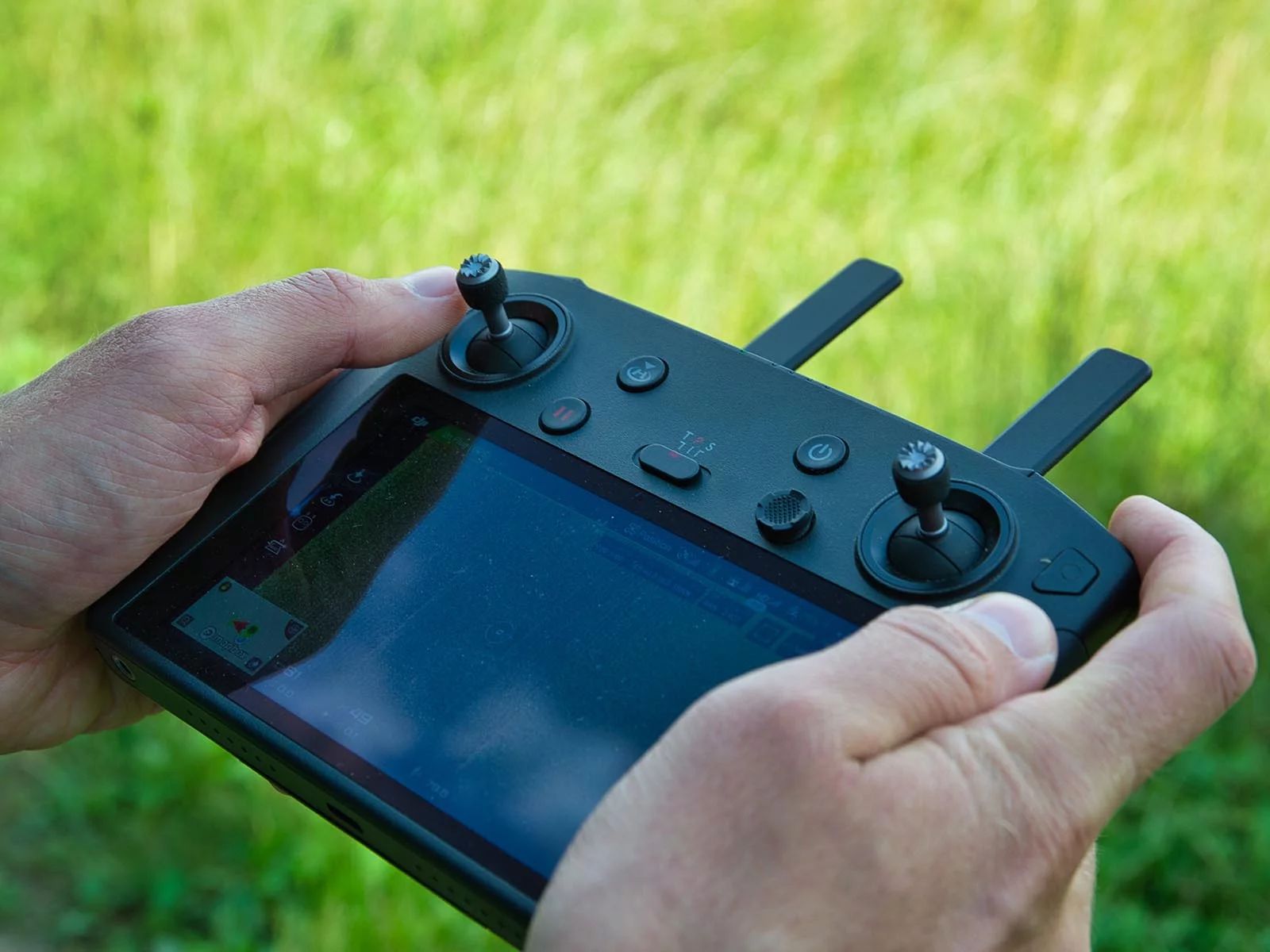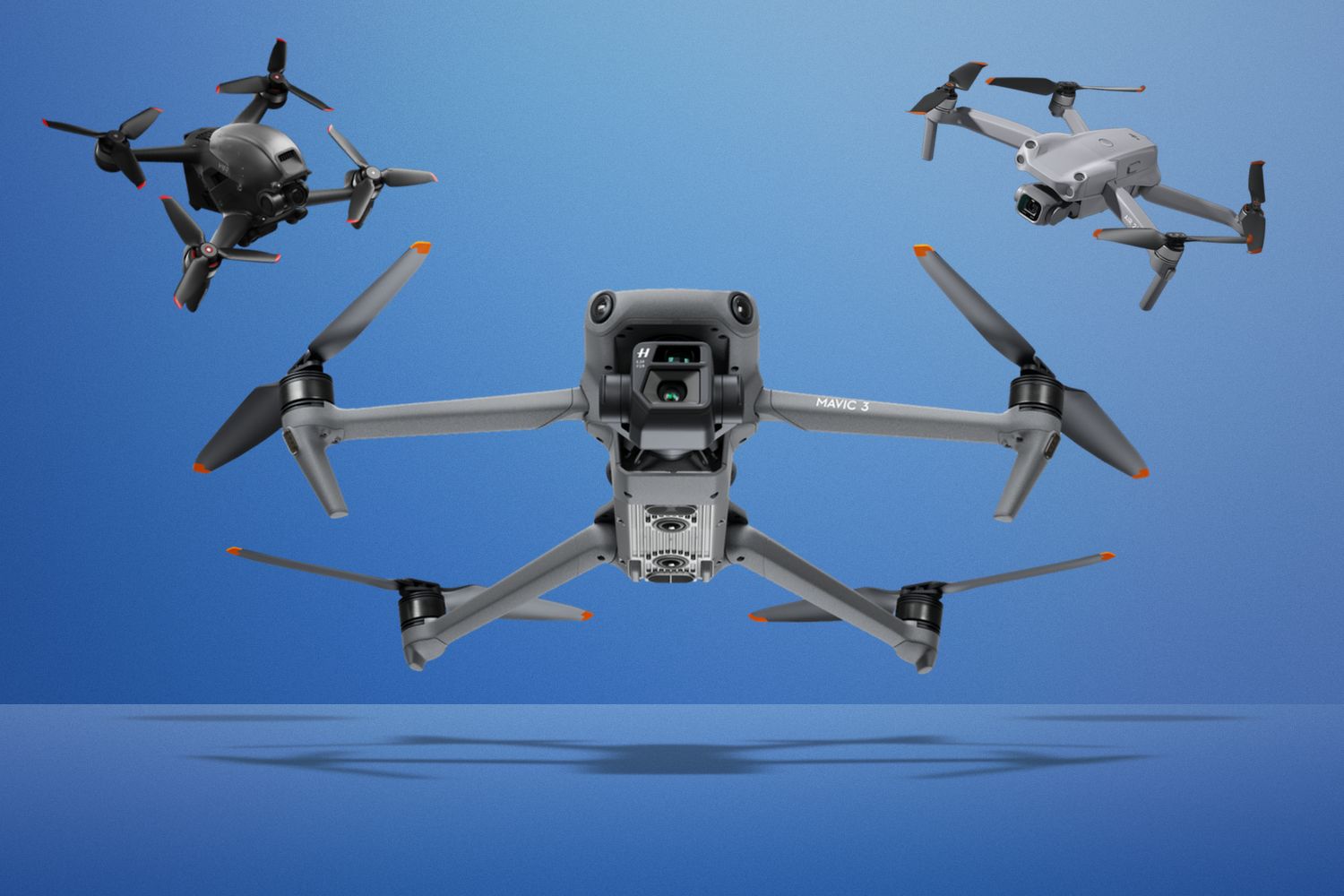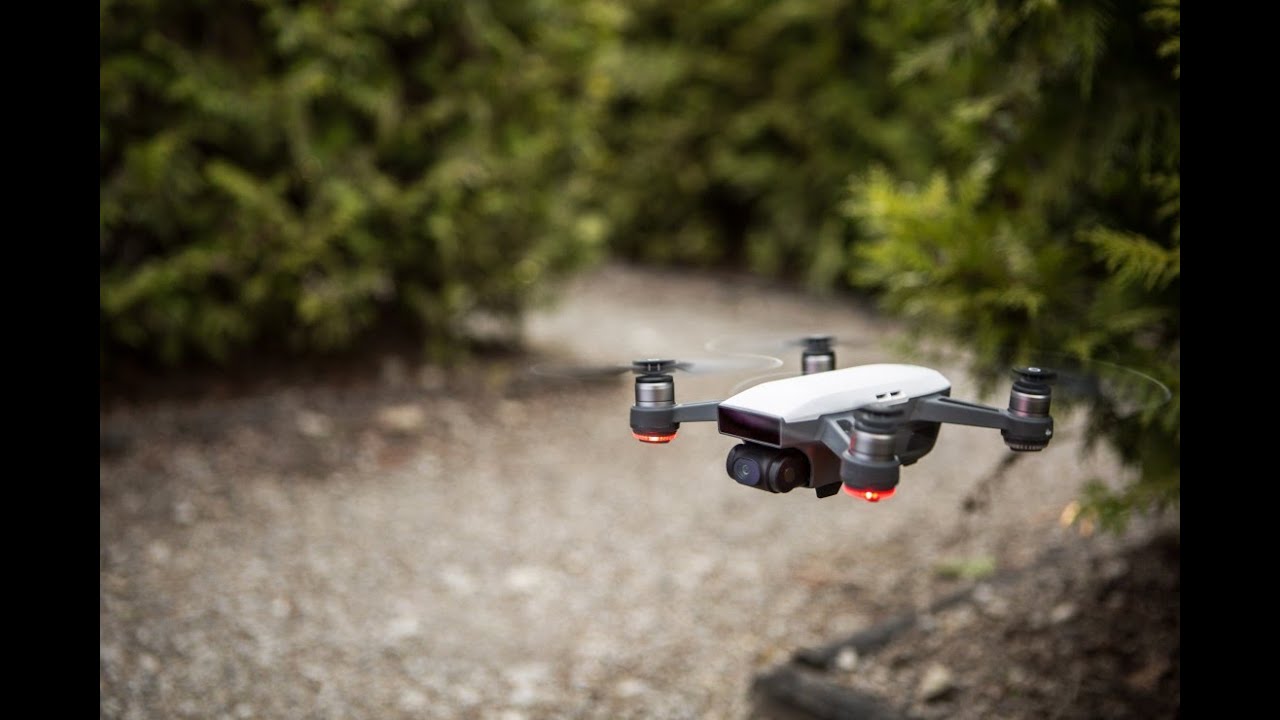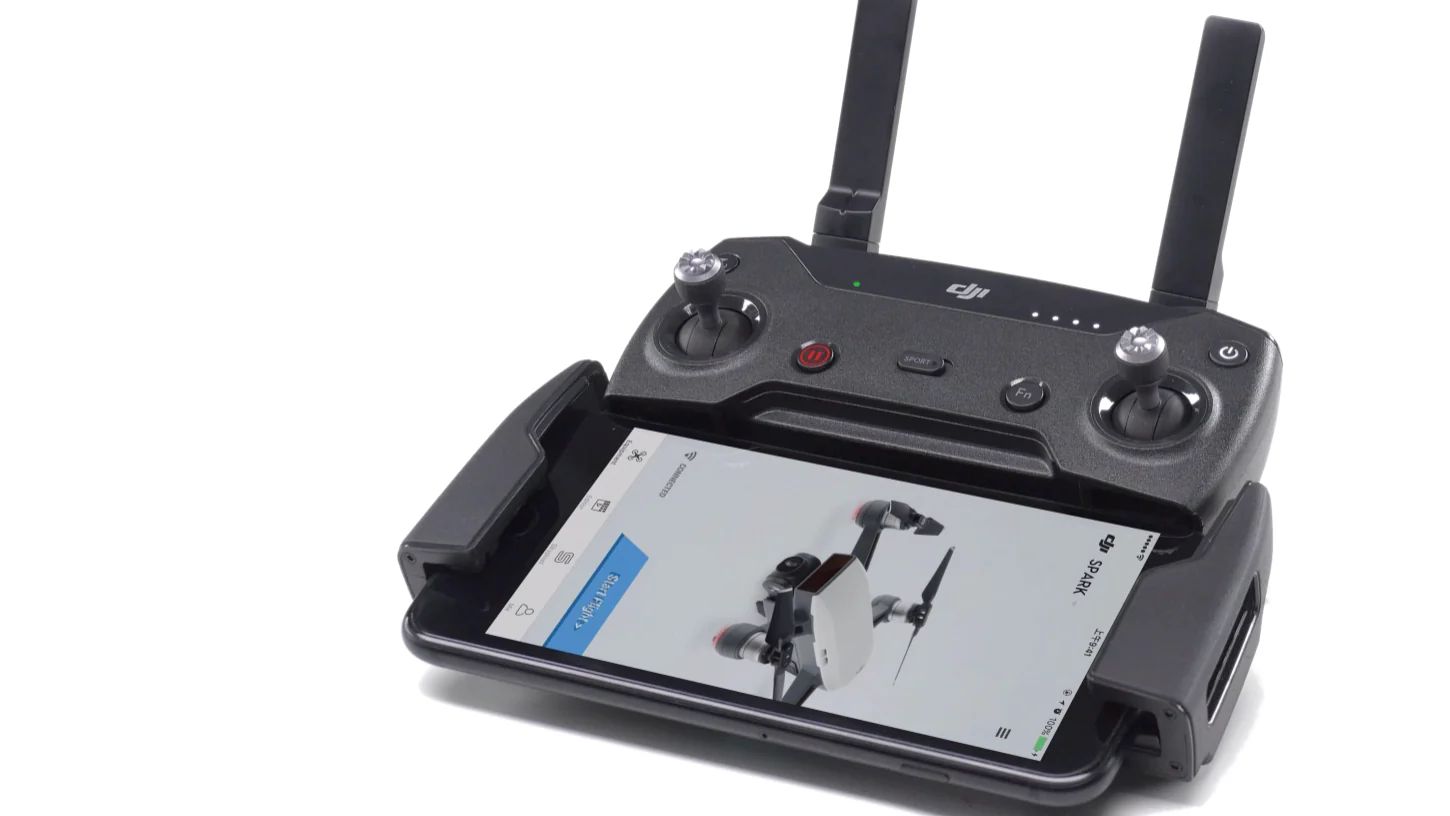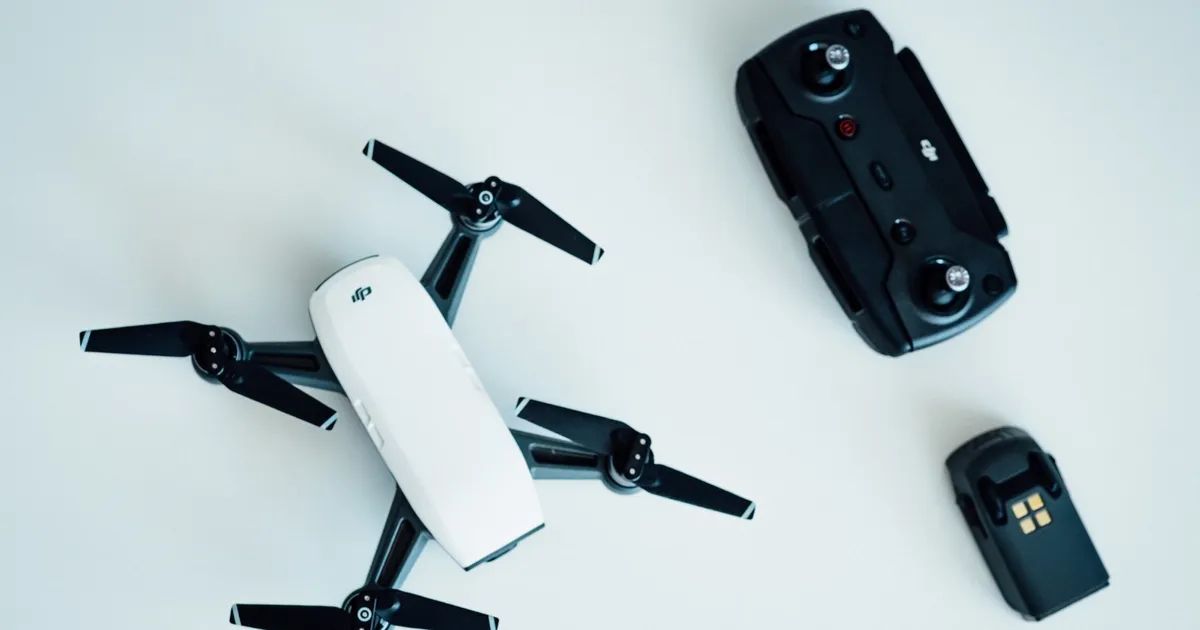Introduction
Welcome to the exciting world of flying the DJI Spark. This compact drone packs a punch with its advanced features and capabilities, making it a popular choice for both beginners and experienced drone pilots. Whether you’re looking to capture stunning aerial photos, record breathtaking videos, or simply enjoy the thrill of flying, the DJI Spark has got you covered.
Before you embark on your drone-flying adventure, it’s important to familiarize yourself with the necessary knowledge and skills to ensure a safe and successful flight. This comprehensive guide will walk you through the process, from choosing the right location to mastering the flight controls, so you can make the most out of your DJI Spark experience.
But why choose the DJI Spark? With its compact size and lightweight design, the DJI Spark is highly portable, allowing you to easily take it on your outdoor adventures. Despite its small stature, the DJI Spark boasts impressive capabilities, including a high-quality camera, intelligent flight modes, and a user-friendly interface. Whether you’re a photography enthusiast, an adventure seeker, or just someone who wants to have fun, the DJI Spark is the perfect companion.
In this guide, we’ll explore everything you need to know to fly the DJI Spark confidently. We’ll cover topics such as choosing the right location, preparing for flight, understanding the flight modes, capturing stunning photos and videos, and even performing advanced aerial maneuvers. So, let’s dive in and unleash the full potential of your DJI Spark!
Choosing the Right Location
When it comes to flying your DJI Spark, selecting the right location is crucial for a safe and enjoyable experience. Here are some factors to consider when choosing your flying spot.
Open Space: Look for a location with ample open space, free from obstacles like trees, buildings, and power lines. A large open field or a park with wide, open areas are great options. This will give you plenty of room to maneuver your DJI Spark and minimize the risk of collision.
Avoid Crowded Areas: While it may be tempting to fly your drone in crowded areas to capture unique footage, it’s important to prioritize the safety and privacy of those around you. Avoid flying near busy streets, stadiums, airports, or other crowded areas where people gather. Always follow local regulations and be respectful of others’ privacy.
Mind the Weather: Keep an eye on the weather conditions before taking your DJI Spark out for a flight. Avoid flying in strong winds, heavy rain, or thunderstorms, as these conditions can greatly affect the stability and control of your drone. Choose a calm and clear day for a smooth and hassle-free flight.
Consider Flight Restrictions: Be aware of any flight restrictions or no-fly zones in your area. Certain locations, such as national parks, government buildings, and airports, may have specific regulations for drone flying. Familiarize yourself with these restrictions and plan your flight accordingly to avoid any legal issues.
Privacy and Respect: Always prioritize the privacy and respect of others when flying your DJI Spark. Avoid capturing footage of private property without permission and be considerate of people’s personal space. It is essential to follow ethical practices and respect the privacy of individuals and their properties.
By considering these factors and being mindful of your surroundings, you can ensure a safe and enjoyable flight experience with your DJI Spark. Remember, the key is to choose a location that offers open space, minimal obstacles, compliant with regulations, and respects the privacy of others.
Preparing for Flight
Before you take to the skies with your DJI Spark, it’s essential to properly prepare yourself and your drone. Here are some important steps to follow to ensure a smooth and successful flight.
Charge Your Batteries: Start by ensuring that your DJI Spark’s batteries are fully charged. This will provide you with optimal flight time and minimize the risk of your drone losing power during the flight. Additionally, make sure to carry spare batteries to extend your flying time.
Check Your Equipment: Inspect your DJI Spark and its accessories to ensure everything is in proper working condition. Look for any damage or wear and tear on the propellers, camera, and the body of the drone. Also, verify that the remote controller is functioning correctly. It’s better to identify any issues before taking off.
Update Firmware: Regularly check for any firmware updates for your DJI Spark and make sure to install them before flying. Firmware updates often provide performance enhancements, bug fixes, and new features, ensuring the best possible flight experience. Connect your drone to the DJI Go app to check for updates.
Secure a Memory Card: If you plan on capturing photos and videos during your flight, make sure to insert a memory card into your DJI Spark. This will allow you to store and retrieve your footage later. Ensure that the memory card is compatible with your drone and has sufficient storage capacity.
Check GPS Signal: Ensure that the GPS signal on your DJI Spark is strong before taking off. A secure GPS connection is crucial for stable flight and accurate positioning. Wait until your drone has acquired a strong GPS signal before initiating the flight.
Review the Manual: Take the time to review the DJI Spark’s user manual and familiarize yourself with its features, controls, and flight modes. Understanding the functionality of your drone will maximize your flight experience and help you make the most of its capabilities.
Plan for Emergency Situations: Prioritize safety by having a plan for emergency situations. Familiarize yourself with the DJI Spark’s emergency landing procedures and know how to manually control your drone in case of any malfunctions or emergencies during the flight. Being prepared will help you quickly and effectively respond to unexpected situations.
By following these preparation steps, you’ll be ready to take flight with confidence and make the most of your DJI Spark’s capabilities. Remember, proper preparation ensures a safe and enjoyable experience in the skies.
Familiarizing Yourself with the DJI Spark
Before you take your DJI Spark for its maiden flight, it’s important to familiarize yourself with its design, controls, and features. Knowing your drone inside out will help you fly with confidence and make the most of its capabilities. Here’s a breakdown of the DJI Spark’s key components:
Body and Propellers: The DJI Spark features a compact and lightweight design, making it highly portable and easy to carry. Its four propellers are responsible for generating lift and are crucial for the drone’s stability and maneuverability during flight. Take a moment to inspect the body and propellers of your DJI Spark to ensure they are in good condition before each flight.
Camera and Gimbal: Positioned at the front of the DJI Spark is a high-quality camera mounted on a 2-axis gimbal. The camera allows you to capture stunning aerial photos and record smooth videos. Familiarize yourself with the camera settings, including resolution, exposure, and white balance, to capture the desired footage for your creative endeavors.
Flight Control Panel: Located on the top of the DJI Spark is the flight control panel, featuring a power button, an LED indicator, and two function buttons. The LED indicator displays important information such as battery level and GPS signal strength. The function buttons provide quick access to various features and modes of the DJI Spark.
Intelligent Flight Modes: The DJI Spark comes equipped with a range of intelligent flight modes, designed to enhance your flying experience and capture unique footage. These modes include ActiveTrack, which allows the drone to follow and track a selected subject, Gesture Control, which lets you control the drone with hand gestures, and QuickShot, which automatically captures cinematic shots with a single tap.
Remote Controller: The DJI Spark can be controlled using its dedicated remote controller, which provides precise control and extends the range of your drone. Take the time to familiarize yourself with the layout of the controls on the remote, including the joysticks, buttons, and dials. Understanding the remote controller will give you greater control over your DJI Spark’s flight movements.
DJI Go App: The DJI Go app is an essential companion for flying the DJI Spark. It allows you to access and adjust advanced settings, view a live feed from your drone’s camera, and control various flight modes and features. Spend some time exploring the app’s functionality and interface to make the most of its capabilities.
By becoming familiar with these components and features, you’ll be better equipped to handle your DJI Spark and take full advantage of its capabilities. Each flight will become an opportunity to explore new creative possibilities and capture breathtaking footage.
Powering On and Connecting the DJI Spark
Before you can take flight with your DJI Spark, it’s important to power it on and establish a strong connection between the drone and your mobile device or remote controller. Here’s a step-by-step guide on how to power on and connect your DJI Spark.
1. Battery Installation: Begin by removing the battery cover on the DJI Spark and insert the fully charged battery into its designated slot. Ensure that the battery is securely in place.
2. Powering On: Press the power button on the drone once, then press and hold it for two seconds to power on the DJI Spark. The LED lights on the front of the drone will start to flash and eventually turn solid green when powered on.
3. Wi-Fi Connection: On your mobile device, navigate to the Wi-Fi settings and connect to the Wi-Fi network named “Spark-XXXXXX” (where “XXXXXX” is the last six digits of your DJI Spark’s serial number). Enter the password if prompted, which is typically “12345678”. Once connected, launch the DJI Go app.
4. Mobile Device Connection: Launch the DJI Go app and follow the on-screen prompts to connect your mobile device to your DJI Spark. Ensure that Wi-Fi and Bluetooth are enabled on your device to establish a stable connection. Once connected, you will see a live view from the drone’s camera on your mobile device.
5. Remote Controller Connection: If you are using the remote controller to control your DJI Spark, power it on by pressing and holding the power button. Open the DJI Go app and select “Remote Controller” on the connection page. Follow the on-screen instructions to pair the remote controller with your DJI Spark. Once connected, you will have full control over the drone using the remote controller.
Once you have successfully powered on and established a connection between your DJI Spark and your mobile device or remote controller, you’re ready to start exploring the skies. It’s always a good practice to double-check the connection and ensure that the Wi-Fi signal is strong and stable before taking off.
Understanding the DJI Spark’s Flight Modes
The DJI Spark is packed with a variety of flight modes that can enhance your drone-flying experience and enable you to capture stunning aerial footage effortlessly. Understanding these flight modes will unlock new possibilities and creative opportunities. Let’s take a closer look at some of the key flight modes available on the DJI Spark:
1. GPS Mode: In GPS mode, your DJI Spark utilizes GPS signals for precise positioning and stability. This mode is ideal for beginners as it provides a stable flight experience and helps prevent your drone from drifting away in windy conditions.
2. Attitude Mode: Attitude mode allows you to have more control over the drone’s movement by disabling the GPS positioning. In this mode, the DJI Spark relies on sensors to maintain altitude, but its position may be affected by wind. Attitude mode is well-suited for experienced pilots who want more manual control over their flights.
3. ActiveTrack: ActiveTrack is a powerful flight mode that enables your DJI Spark to automatically track and follow a subject of your choice. Simply select the subject using the DJI Go app, and the drone will use its visual-tracking technology to keep the subject in frame while you focus on capturing the action.
4. Gesture Control: Gesture Control allows you to control your DJI Spark using simple hand gestures, making it an intuitive and fun flight mode. By utilizing gestures such as waving your hand or forming a frame with your fingers, you can instruct the drone to takeoff, land, capture a selfie, or even follow you in a predetermined flight path.
5. QuickShot: QuickShot mode enables the DJI Spark to capture professional-looking shots with just a single tap. There are various QuickShot modes to choose from, including Rocket (ascend quickly and capture a straight-down aerial shot), Dronie (fly backward while keeping the subject in focus), and Circle (circle around the subject). With QuickShot, you can effortlessly capture cinematic shots without the need for complex flight maneuvers.
6. TapFly: TapFly mode allows you to simply tap on the DJI Go app to set a destination, and your DJI Spark will automatically fly towards it. This mode is great for capturing aerial footage while maintaining focus on the subject or exploring a specific area without the need for manual navigation.
These are just a few of the flight modes available on the DJI Spark. Each mode offers unique capabilities to suit different scenarios and creative preferences. Explore and experiment with these flight modes to discover new ways to capture stunning aerial footage and take your drone flying skills to the next level!
Taking Off and Landing
Taking off and landing are two critical aspects of flying your DJI Spark drone safely and successfully. Understanding the proper techniques and precautions for these maneuvers is essential. Let’s explore the steps involved in taking off and landing your DJI Spark:
Taking Off:
- Ensure that your DJI Spark is properly powered on and connected to your remote controller or mobile device.
- Find an open space, free from obstacles, and verify that your GPS signal is strong for optimal stability.
- Check and adjust the camera angle if needed to capture the desired footage.
- On the DJI Go app or the remote controller, initiate the takeoff command. Your DJI Spark will automatically ascend to a safe hovering altitude.
- Monitor your drone closely and ensure it is maintaining a stable hover.
Landing:
- Find a suitable landing location that is clear of any obstructions.
- Slowly descend your DJI Spark by using the throttle stick on your remote controller or the landing button in the DJI Go app.
- Ensure that the drone is descending steadily and under your control.
- When the drone is close to the ground, reduce the throttle to bring it down gently.
- Once the DJI Spark has safely landed, power off the motors and disconnect your remote controller or mobile device.
While taking off and landing may seem straightforward, it’s important to follow these steps carefully to avoid any mishaps or accidents. Here are some additional tips to keep in mind:
Pre-flight Checks: Before taking off, always perform a quick pre-flight inspection of your DJI Spark. Make sure that the propellers are in good condition, the battery is fully charged, and there are no physical damages or obstacles that could interfere with the flight.
Monitor Battery Levels: Keep an eye on your DJI Spark’s battery levels throughout the flight to ensure that you have enough power for a safe landing. It’s recommended to set a pre-defined battery threshold to receive warnings and reminders when it’s time to bring the drone back for landing.
Practice Controlled Landings: Landing smoothly and accurately is a skill that comes with practice. Take the time to practice controlled landings in an open area to develop the necessary techniques and become more confident in safely landing your DJI Spark.
Be Aware of Environmental Conditions: Consider factors like wind speed and weather conditions when taking off and landing your DJI Spark. Strong winds can make the drone unstable during these maneuvers, so it’s important to adjust your flight plan accordingly or wait for more favorable conditions.
By following these guidelines, you can ensure safe and successful takeoffs and landings with your DJI Spark drone. Remember to always prioritize the safety of yourself, others, and your surroundings during each flight.
Mastering Basic Flight Controls
To become a skilled pilot of the DJI Spark, it’s crucial to master the basic flight controls. Understanding how to maneuver your drone effectively will allow you to capture amazing footage and navigate the skies with confidence. Let’s explore the basic flight controls of the DJI Spark:
1. Throttle Stick: The throttle stick, often located on the left side of the remote controller, controls the ascent and descent of the DJI Spark. Pushing the stick upward increases the throttle and lifts the drone, while pulling it downward reduces the throttle and descends the drone.
2. Directional Controls: The directional controls, typically located on the right side of the remote controller, control the movement of the drone in different directions. Pushing the control stick forward moves the DJI Spark forward, pulling it backward moves the drone backward, pushing it to the left moves the drone to the left, and pushing it to the right moves the drone to the right.
3. Yaw Control: The yaw control, usually controlled by rotating the left control stick horizontally, controls the rotation of the DJI Spark. Rotating the stick to the left or counterclockwise rotates the drone to the left, while rotating it to the right or clockwise rotates the drone to the right.
4. Trim Adjustments: The trim adjustments are small buttons or switches on the remote controller that allow you to fine-tune the stability and levelness of the DJI Spark during flight. Use these controls to balance the drone, especially if it tends to drift or hover unevenly.
5. Intelligent Flight Modes: The DJI Spark offers various intelligent flight modes that can be accessed through the DJI Go app. These modes allow for automated flight maneuvers and creative aerial shots, reducing the need for manual control. Familiarize yourself with these modes and their respective controls within the app.
To master the basic flight controls, it’s important to practice in an open and obstacle-free area. Start with slow and gentle movements, gradually increasing speed and agility as you become more comfortable. Pay attention to the drone’s responsiveness and adjust your control inputs accordingly.
Additionally, familiarize yourself with the flight settings in the DJI Go app, including sensitivity and speed controls. Adjusting these settings can customize the flight experience to your preference, making it easier to handle the DJI Spark and achieve smoother flight movements.
Remember, mastering the basic flight controls takes time and practice. Regularly fly your DJI Spark, experiment with different maneuvers, and gradually challenge yourself to expand your drone-flying skills. The more you practice, the more confident and proficient you will become in piloting your DJI Spark.
Navigating the DJI Spark Using the Remote Controller
The remote controller is a vital tool for piloting the DJI Spark, providing precise control and allowing you to navigate the drone with ease. Understanding the various controls and functions of the remote controller will help you make the most of your flying experience. Let’s explore how to navigate the DJI Spark using the remote controller:
1. Power On: Start by powering on the remote controller by pressing and holding the power button until it turns on. Ensure that the remote controller is fully charged before each flight.
2. Connection: Establish a stable connection between the remote controller and the DJI Spark. This can be achieved by turning on your DJI Spark and remote controller, and ensuring they are both connected to the same Wi-Fi network.
3. Joysticks: The remote controller features two joysticks, typically located at the bottom corners. The left joystick controls the altitude and rotation of the drone, while the right joystick controls its movement forward, backward, left, and right.
4. Gimbal Control: The remote controller may have dedicated buttons or dials for controlling the gimbal, which adjusts the angle and position of the camera. This allows you to capture footage from various perspectives during flight.
5. Takeoff and Landing: The remote controller usually has dedicated buttons for takeoff and landing, allowing for quick and easy initiation of these maneuvers. Familiarize yourself with these buttons to ensure smooth and controlled takeoffs and landings.
6. Flight Mode Switch: Some remote controllers have a flight mode switch that allows you to switch between different flight modes, such as GPS mode, Attitude mode, or Sport mode. Refer to the user manual of your specific remote controller to understand its flight mode switching functionality.
7. Return-to-Home (RTH) Button: The remote controller often has a dedicated RTH button, which initiates an automatic return-to-home function. This feature prompts the DJI Spark to automatically fly back to its takeoff point, utilizing GPS technology for precise navigation.
8. Intelligent Flight Mode Controls: If your DJI Spark has intelligent flight modes, the remote controller will have buttons or switches to control and activate these modes. These controls allow you to automate flight maneuvers like ActiveTrack or QuickShot for capturing dynamic and creative shots.
It’s important to practice using the remote controller and become comfortable with its layout and functionality. Start with slow and gentle movements, gradually increasing your control inputs as you gain confidence. Experiment with different flight modes and controls to fully explore the capabilities of the DJI Spark and capture unique footage.
Always ensure that you have a secure grip on the remote controller and maintain a clear line of sight with the DJI Spark during flight. Regularly check the battery level of the remote controller and keep it fully charged for uninterrupted control over your drone.
By mastering the navigation controls of the DJI Spark remote controller, you can navigate the skies with precision and confidently explore the world from an incredible aerial perspective.
Using Gesture Control to Fly the DJI Spark
One of the unique features of the DJI Spark is its Gesture Control mode, allowing you to control the drone using simple hand gestures. This innovative feature opens up a whole new world of possibilities for flying your DJI Spark without the need for a remote controller or mobile device. Let’s explore how to use Gesture Control to fly the DJI Spark:
1. Activate Gesture Control: Prior to using Gesture Control, ensure that your DJI Spark is powered on and connected to the DJI Go app. Open the app and navigate to the Gesture Control mode.
2. Standby Position: To activate Gesture Control, position yourself in front of the DJI Spark at a distance of around 3 to 6 feet (1 to 2 meters). Make sure the front of your palm and your face are facing the drone.
3. Palm Launch: To initiate the Gesture Control flight, extend your arm toward the DJI Spark and hold your palm out, facing the camera. The drone will recognize your palm and start the engines.
4. Hand Gestures: Once the DJI Spark is airborne, it will track your hand and interpret specific gestures as commands. Move your palm left or right to control the drone’s horizontal movement and tilt your palm forward or backward to adjust the altitude.
5. Selfie Gesture: To capture a selfie using Gesture Control, position yourself in front of the drone, make a frame shape with your fingers, and hold it up to your face. The DJI Spark will recognize the gesture and snap a photo.
6. Palm Land: To safely land the DJI Spark using Gesture Control, hold your palm out and face it toward the drone’s camera. The drone will detect your palm and perform an automatic landing sequence.
7. Safety Tips: When using Gesture Control, it’s important to be in an open area free from obstacles. Ensure that there are no other individuals or objects around that could inadvertently trigger unintended commands. Be cautious of your surroundings and keep a watchful eye on the drone at all times.
Gesture Control mode offers a convenient and intuitive way to control your DJI Spark, eliminating the need for a remote controller or mobile device. It’s a fantastic feature for capturing hands-free selfies, group photos, or tracking subjects in motion.
Practice using Gesture Control in a safe environment to become familiar with the drone’s responses to different gestures. As with any flight mode, it’s important to exercise caution and follow all safety guidelines provided by DJI when using Gesture Control to ensure a safe and enjoyable flying experience with your DJI Spark.
Capturing Stunning Aerial Photos and Videos
The DJI Spark’s high-quality camera and stable flight controls make it an excellent tool for capturing stunning aerial photos and videos. With a little creativity and understanding of photography principles, you can elevate your visuals to new heights. Here are some tips to help you capture breathtaking shots with your DJI Spark:
1. Compose Your Shot: Take the time to compose your shot before capturing it. Use leading lines, symmetry, and the rule of thirds to create visually appealing compositions. Experiment with different angles and perspectives to capture unique and dynamic shots.
2. Adjust Camera Settings: The DJI Spark allows you to manually adjust camera settings such as exposure, ISO, and white balance. Take advantage of these settings to achieve the desired look for your photos and videos. Adjusting the exposure compensation can help balance the lighting and maintain detail in both bright and dark areas of your footage.
3. Utilize Intelligent Flight Modes: Explore the intelligent flight modes available on the DJI Spark, such as ActiveTrack or QuickShot, to capture complex shots effortlessly. These modes allow you to track subjects, create professional-looking cinematics, and add dynamic movement to your videos.
4. Use the Burst Mode: When capturing action shots or fast-moving subjects, utilize the Burst mode to capture a rapid series of photos. This will increase your chances of capturing the perfect moment and give you more options to choose from during post-processing.
5. Experiment with Different Perspectives: The DJI Spark’s compact size and agility enable you to capture aerial shots from unique angles and positions. Try flying low to the ground for a fresh perspective or ascend to a higher altitude for a wider view. Be creative and experiment with different heights, angles, and distances to add depth and interest to your shots.
6. Consider Lighting Conditions: Lighting plays a crucial role in photography. Capture your shots during the golden hours of sunrise or sunset for warm and soft lighting. Alternatively, experiment with long-exposure photography at night to capture light trails or captivating nightscapes.
7. Edit and Enhance: Once you’ve captured your aerial photos and videos, take the time to edit and enhance them using photo and video editing software. Adjust the colors, contrast, and sharpness to bring out the best in your footage. Consider adding music, titles, and transitions to create a compelling visual story.
By following these tips, you can elevate the quality of your aerial photography and videography with your DJI Spark. Remember to keep safety a priority, fly within legal limits, and respect the privacy of others when capturing footage.
Each flight is an opportunity to unleash your creativity and capture breathtaking shots that highlight the beauty of the world from a unique aerial perspective.
Understanding and Utilizing Intelligent Flight Modes
The DJI Spark is equipped with a range of intelligent flight modes that can help you capture stunning aerial footage and add a professional touch to your drone photography and videography. These intelligent flight modes are designed to simplify complex maneuvers, automate flights, and unlock creative possibilities. Let’s explore some of the key intelligent flight modes available on the DJI Spark:
1. ActiveTrack: ActiveTrack allows you to track and follow a subject of your choice, whether it’s a person, vehicle, or any other moving object. Simply select the subject on the DJI Go app, and the DJI Spark will use its visual-tracking technology to keep the subject in the frame while you focus on capturing the action.
2. QuickShot: QuickShot provides a variety of automated flight paths and maneuvers to create professional-looking shots with just a single tap. Choose from modes like Rocket (ascend rapidly with the camera pointing downward), Dronie (fly backward while keeping the subject in focus), or Circle (create a circular flight path around the subject). QuickShot modes enable you to capture dynamic shots effortlessly.
3. TapFly: TapFly allows you to set a destination on the DJI Go app, and the DJI Spark will autonomously fly towards that point while avoiding obstacles. This mode is great for capturing shots while keeping the focus on a specific subject or exploring an area without the need for manual control.
4. Gesture Control: Gesture Control allows you to control the DJI Spark using simple hand gestures, making it a fun and intuitive flight mode. By using gestures such as waving your hand or forming a frame with your fingers, you can command the drone to takeoff, land, capture a selfie, or even follow you in a predetermined flight path.
5. Tripod Mode: Tripod Mode is designed for precise and slow movements, allowing you to capture smooth and cinematic shots. This mode reduces the drone’s sensitivity to ensure more precise control and smoother footage, perfect for capturing artistic and slowed-down shots.
6. Cinematic Mode: Cinematic Mode is another flight mode that enables smooth and slow movements, providing more control when capturing video footage. It limits the drone’s maximum speed and accelerations, resulting in silky-smooth shots, ideal for capturing stunning cinematic sequences and breathtaking flyover shots.
7. Follow Me: Follow Me mode allows the DJI Spark to autonomously follow and track a moving subject, whether it’s a person, vehicle, or other object. The drone uses GPS technology to maintain a constant distance and position relative to the subject, allowing you to capture hands-free footage as you engage in various activities.
To utilize these intelligent flight modes effectively, it’s essential to familiarize yourself with the DJI Go app and master the controls and settings. Take the time to understand each mode’s functionality, explore their options, and practice their use in a safe and open area.
Experiment with different intelligent flight modes to add variety and creativity to your aerial photography and videography. Combine them with manual flight controls and creative compositions to capture truly breathtaking shots and cinematic footage with your DJI Spark.
Always remember to fly responsibly, follow local regulations, and prioritize safety when utilizing intelligent flight modes. These modes are powerful tools that can enhance your drone flying experience and allow you to unlock new creative possibilities with your DJI Spark.
Performing Advanced Aerial Maneuvers
Once you have mastered the basic flight controls of your DJI Spark, you may be ready to take your flying skills to the next level by performing advanced aerial maneuvers. These maneuvers can add excitement, creativity, and a professional touch to your drone flights. Here are some advanced maneuvers you can try with your DJI Spark:
1. Orbit/Circle: The orbit or circle maneuver involves flying in a circular path around a subject, creating a smooth and cinematic shot. Start by positioning your DJI Spark at a suitable distance from the subject. Fly the drone in a circular trajectory while keeping the camera focused on the subject throughout the movement.
2. Fly-through: A fly-through maneuver involves flying the drone through a narrow or challenging obstacle, such as a bridge or tree branches. This maneuver requires precise control and a deep understanding of the drone’s dimensions. Carefully plan and execute the fly-through to capture a unique perspective while ensuring the safety of your drone.
3. Top-Down Shot: Take your drone to a higher altitude and position it directly above your subject. Point the camera straight down and capture a top-down shot. This perspective provides a fascinating view, especially for capturing structures, landscapes, or groups of people. Experiment with different heights and angles to achieve the desired effect.
4. Fly-by: A fly-by maneuver involves smoothly flying the drone past a subject in a linear path, capturing a dynamic shot. This maneuver works well for showcasing the size or scale of a subject or capturing a subject in motion. Ensure you maintain a safe distance and speed while flying past the subject for a dramatic effect.
5. Towering Ascent/Descent: Fly your DJI Spark straight up or down from a low or high altitude, creating a towering effect. This technique is particularly useful for revealing or concealing a subject dramatically. Slowly ascend or descend while keeping the subject framed within the shot to showcase a striking perspective.
6. Tracking Shot: Practice tracking shots by using the DJI Spark’s intelligent flight modes or manually flying the drone while keeping a subject in the frame. This maneuver is great for capturing dynamic movement, such as a person running, a car driving, or a boat sailing. Keep the subject centered and track its movement smoothly for a professional-looking shot.
7. Flip/Roll: If your DJI Spark supports aerial acrobatics, try performing flips or rolls to add excitement and creativity to your footage. These maneuvers can provide a thrilling visual experience. Ensure you have a clear and open space to execute these maneuvers safely and practice them at a suitable altitude with caution.
Remember, practice is key to mastering advanced aerial maneuvers with your DJI Spark. Start by practicing in open areas free from obstacles and gradually increase the difficulty as you gain confidence and proficiency. Always prioritize safety, follow local regulations, and respect the privacy and property of others.
Each advanced maneuver you master will expand your creative repertoire and allow you to capture stunning and captivating shots with your DJI Spark.
Safety Tips for Flying DJI Spark
Flying your DJI Spark is an exciting and fulfilling experience, but it’s crucial to prioritize safety to ensure a responsible and incident-free flight. Here are some essential safety tips to keep in mind when flying your DJI Spark:
1. Read and Understand the Manual: Familiarize yourself with the DJI Spark’s user manual and guidelines before your first flight. Understanding the drone’s features, flight modes, and safety recommendations will help you operate it safely and avoid accidents.
2. Choose a Suitable Location: Fly your DJI Spark in open areas away from people, traffic, and structures. Avoid flying near airports, helipads, or restricted airspace. Select locations with minimal obstacles and sufficient space to maneuver the drone safely.
3. Check Weather Conditions: Before taking off, check the weather conditions in your area. Avoid flying in rain, thunderstorms, high winds, or strong gusts that can affect your drone’s stability and control. Always prioritize safety over capturing footage in adverse weather conditions.
4. Maintain Visual Line of Sight: Keep your DJI Spark within your line of sight during the entire flight. Losing visual contact with your drone can lead to accidents or unintentional trespassing. Use the DJI Go app’s live feed or FPV goggles to enhance your view but avoid relying solely on them.
5. Fly at a Safe Altitude: Adhere to legal altitude limits and local regulations when operating your DJI Spark. Maintain a safe distance from buildings, people, and other aircraft. Respect privacy and avoid flying over private property without permission.
6. Monitor Battery and Flight Time: Keep a close eye on your DJI Spark’s battery level during flight. Land the drone and recharge it before the battery reaches critically low levels. Plan your flight time accordingly to ensure a safe return and prevent unexpected power loss.
7. Respect Local Regulations: Familiarize yourself with the local drone regulations and laws in your area. Ensure you are aware of any restrictions, permits, or flight permits before flying your DJI Spark. Respect the privacy, rights, and property of others when capturing footage.
8. Avoid Signal Interference: Minimize signal interference by flying your DJI Spark in areas free from electromagnetic interference. Avoid operating near power lines, radio towers, or other sources of strong signal interference that can disrupt the connection between the drone and the controller.
9. Keep Your Firmware Updated: Regularly update the firmware of your DJI Spark to ensure optimal performance and access to the latest features and safety enhancements. Staying updated with firmware releases ensures a safer and more reliable flight experience.
10. Practice Responsible Flying: Be considerate of others when flying your DJI Spark. Avoid flying over large crowds or sensitive areas. Fly responsibly, follow ethical practices, and respect the privacy, safety, and comfort of those around you.
By following these safety tips, you can enjoy your DJI Spark flights safely and responsibly. Remember, safety should always be a priority, and adhering to local regulations and guidelines will help ensure a positive and incident-free drone flying experience.
Troubleshooting Common Issues
While flying your DJI Spark can be an exhilarating experience, it’s not uncommon to face some common issues along the way. Understanding how to troubleshoot these issues can help you overcome challenges and ensure a smooth flight. Here are some common issues you may encounter with your DJI Spark and potential solutions:
1. Poor GPS Signal: If you’re experiencing a weak or unstable GPS signal, try moving to an open area free from obstructions. Ensure that you have a clear view of the sky to allow for proper satellite reception. Calibrating the compass and updating the firmware can also help resolve GPS-related issues.
2. Connectivity Issues: If you’re having trouble connecting your DJI Spark to the remote controller or DJI Go app, double-check that both devices are properly connected via Wi-Fi or cable. Ensure that you’re using the latest version of the DJI Go app and that your mobile device’s software is up to date. Restarting both the drone and the controller can often resolve connectivity issues.
3. Drifting or Inconsistent Flight: If your DJI Spark seems to drift or behave erratically during flight, calibrate the IMU (Inertial Measurement Unit) and the compass. This process will help ensure accurate flight controls and stable flight performance.
4. Battery Drain or Short Flight Time: If you notice a decrease in flight time or faster battery drain, first ensure that the batteries are fully charged. Avoid flying in extreme weather conditions and high wind speeds, as these can consume more battery power. Calibrating the battery can also help improve performance and accuracy.
5. Camera Malfunctions: If your DJI Spark’s camera is not functioning properly or you’re experiencing issues with image stabilization, ensure that the gimbal and camera are clean and free from obstructions. Calibrating the gimbal and checking for firmware updates can also help resolve camera-related issues.
6. Crashed or Damaged Drone: In the event of a crash or damage, it’s important to assess the extent of the damage. Inspect the drone for physical damages, such as broken propellers or bent arms. Replace any damaged parts before attempting to fly the drone again. Contact DJI support or consult a professional technician if needed.
7. Firmware Update Issues: If you encounter issues during firmware updates, ensure that your mobile device has a stable internet connection and sufficient available storage. Restart both your mobile device and the drone, and attempt the firmware update again. If the issue persists, contact DJI support for further assistance.
If you’re still experiencing difficulties with your DJI Spark after attempting troubleshooting steps, it’s advisable to consult the DJI support team or visit the official DJI forums for additional guidance. Remember to always prioritize safety and follow the manufacturer’s recommendations when addressing technical issues with your DJI Spark.
Conclusion
Congratulations! You have now familiarized yourself with the essential aspects of flying the DJI Spark drone. By following the tips and guidelines in this guide, you can confidently take to the skies, capture stunning aerial footage, and unlock the full potential of your DJI Spark.
Remember to prioritize safety and adhere to local regulations when flying your drone. Choose appropriate flying locations, be mindful of your surroundings, and always consider the privacy and comfort of others. Regularly check for firmware updates, keep your equipment in optimal condition, and stay informed of any changes to drone regulations in your area.
As you continue to gain experience and explore the various flight modes and features of the DJI Spark, your creativity and skills as a drone pilot will flourish. Experiment with different angles, settings, and perspectives to capture breathtaking photos and videos that showcase the world from a unique aerial viewpoint.
Keep practicing and pushing the boundaries of your drone-flying abilities to master advanced maneuvers and refine your aerial photography and videography techniques. The more you fly, the more you will uncover the endless possibilities that the DJI Spark has to offer.
Finally, enjoy the journey. Flying the DJI Spark opens up a world of creativity and adventure. Embrace the joy of capturing stunning aerial footage, documenting memorable moments, and sharing your unique perspective with others. Fly responsibly, fly safely, and make the most of every flight with your DJI Spark!







